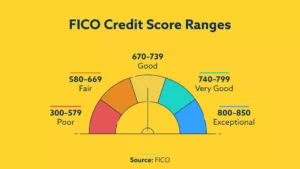Student loans do not go away. And, in most instances, filing bankruptcy will not get rid of them. But your student loan may be eligible for student loan forgiveness.
A 2017 report by the Consumer Financial Protection Bureau estimated that one-fourth of the American workforce may be eligible for repayment or student loan forgiveness but do not take advantage of the programs. However, further investigation revealed it was not the fault of borrowers as the student loan forgiveness program actually offered very little forgiveness.
Many borrowers discovered they had the wrong repayment plan to be eligible for the program after making a decade of payments leaving borrowers straddled with debt that they thought would be erased.
Fast forward to Oct. 2021, when the U.S. Department of Education announced sweeping changes to its Public Service Loan Forgiveness program after thousands of public worker borrowers, including teachers, police officers, and firefighters complained their applications for forgiveness had been denied.
The changes to the program will benefit half a million people with some borrowers receiving immediate relief.
Guide to Student Loan Forgiveness Programs
Public Service Loan Forgiveness Program
In 2007, Congress passed the College Cost Reduction and Access Act; and, with the passage of that act, the Public Service Loan Forgiveness Program (PSLF) was established.
This program was created to “encourage individuals to enter lower-paying but vitally important public sector jobs such as military service, law enforcement, public education, and public health professions.”
Eligible borrowers can cancel the remaining balance of their Direct Student Loans after having worked or served at what is considered a public service organization for 10 years in addition to having made 120 qualifying payments on their student loans.
Anyone employed with a federal, state, local, or tribal organization, agency, or entity; a public child or family service agency; or a tribal college or university may qualify.
Other individuals may qualify by working at an organization or a non-profit organization that has been designated as tax-exempt by the Internal Revenue Service (IRS) under Section 501(c)(3) of the Internal Revenue Code (IRC).
This includes most not-for profit private schools, colleges, and universities and private, non-profit organizations that are not a labor union or partisan political organization.
What loans qualify?
- Direct Stafford loans
- Direct Parent and Grad PLUS loans
- Direct Consolidation loans
New changes to the Public Service Loan Forgiveness Program allow borrowers who made payments with an FFEL or Perkins Loan to have those payments count toward PSLF as long as they consolidate those loans and apply for PSLF before Oct. 31, 2022.
Check out the press release from the Department of Education further expanding on changes to the program.
Until October 31, 2022, the following PSLF requirements are waived:
- Receive credit for periods of repayment made on Direct, FFEL, or Perkins Loans
- Past payments under any plan count for non-consolidation loans through Sept 30, 2021.
- Past payments made on loans before consolidation count, even if on the wrong repayment plan.
- Past payments that were made late or for less than the amount due count for non-consolidation loans through Sept 30, 2021.
- Past payments made on loans before consolidation count, even if paid late, or for less than the amount due.
- Need to be employed full-time for a qualifying employer in order to receive credit
- Can receive forgiveness even if not employed or not employed by a qualifying employer at the time of application and forgiveness
Find out more about PSLF Temporary Changes.
Teacher Loan Forgiveness Programs
Become a public school teacher in low-income, underserved areas to receive loan forgiveness. Both the federal government and state-specific student loan forgiveness programs are available for teachers.
For federal programs, you must teach full-time for 5 consecutive years in a designated elementary or secondary school or educational service agency serving low-income families.
Federal forgiveness eligibility requirements?
- You may receive up to $17,500 or $5000 in loan forgiveness depending on the subject area taught, mathematics or science at the secondary school level.
- A special education teacher (at either the elementary or secondary level) whose primary responsibility was to provide special education to children with disabilities.
- If you didn’t teach mathematics, science, or special education, you may receive up to $5,000 in loan forgiveness if you were a highly qualified full-time elementary or secondary education teacher.
- Teachers with Federal Perkins loans may be eligible to have their loan canceled if they work full-time at a low-income school. This option is also available to teachers of certain subjects like math, science, or bilingual education.
What loans qualify?
- Direct loans
- Perkins loans
- PLUS loans
- State-Sponsored Student Loan Forgiveness Programs
Many states offer loan forgiveness programs for teachers in high-need areas. Check out the American Federation of Teachers’ searchable database to find state and local forgiveness programs.
Perkins Loan Cancellation And Discharge
Perkins loan borrowers may qualify for up to 100% of their loan canceled over 5 years depending on the amount of qualifying service in particular occupations. For instance:
- 15% of their principal balance and accrued interest can be canceled after their first and second year of qualifying service.
- 20% of their principal balance and accrued interest can be canceled after their third and fourth year.
- 30% of their principal balance and accrued interest can be canceled after their fifth year.
Perkins loans also offer concurrent deferment if you are performing qualifying service. Borrowers can combine deferment with the cancellation options which means you could potentially never have to make payments on these loans.
Here are the professions eligible for cancellation:
- Attorney: You must be a full-time attorney employed in a federal public or community defender organization. You must perform qualified service that includes August 14, 2008, or began on or after that date. You may receive up to 100% forgiveness of your loans.
- Child or family services agency: You must be a full-time employee of a public or nonprofit child or family services agency providing services to high-risk children and their families from low-income communities. You may receive up to 100% forgiveness of your loans.
- Firefighter: You must be a full-time firefighter whose service included August 14, 2008, or began on or after that date. Firefighters may receive up to 100% forgiveness of their loans.
- Head Start: You must be a full-time staff member in the education component of a Head Start program. You may receive up to 100% forgiveness of your loans—15% of the principal balance and accrued interest for each year of service.
- Imminent danger area: You must serve in the U.S. Armed Forces in a hostile fire or imminent danger area. You may receive forgiveness for up to 50% of your outstanding loans if your active duty ended before August 14, 2008. You may receive up to 100% forgiveness of your outstanding loans if your active duty includes or began after August 14, 2008.
- Intervention services provider: You must be a full-time qualified professional provider of early intervention services for the disabled. Service must include August 14, 2008, or have begun on or after that date. You may receive up to 100% forgiveness of your loans.
- Law enforcement: You must be a full-time law enforcement or corrections officer. You may receive up to 100% forgiveness for your loans.
- Librarian: You must be a librarian with a master’s degree working in a Title I-eligible elementary or secondary school or in a public library serving Title I-eligible schools. Work must include August 14, 2008, or have begun on or after that date. You may receive up to 100% forgiveness of your loans.
- Nurse or medical technician: You must be a full-time nurse or medical technician. You may receive up to 100% forgiveness of your outstanding loans.
- Pre-Kindergarten or child care: You must be a full-time staff member in a prekindergarten or child care program that is licensed or regulated by a state. Work must include August 14, 2008, or have begun on or after that date. You may receive up to 100% forgiveness of your loans.
- Special education teacher: You must be a full-time special education teacher of children with disabilities in a public school, nonprofit elementary or secondary school, or educational service agency. If the service is at an educational service agency, it must include August 14, 2008, or have begun on or after that date. You may receive up to 100% forgiveness of your loans.
- Speech pathologist: You must be a full-time speech pathologist with a master’s degree working in a Title I-eligible elementary or secondary school. Your service must include August 14, 2008, or have begun on or after that date. You may receive up to 100% forgiveness of your loans.
- Teacher at an educational service agency: You must be a full-time teacher in a designated educational service agency that serves students from low-income families. You service must include August 14, 2008, or have begun on or after that date. You may receive up to 100% forgiveness of your loans.
- Teacher in shortage area field: You must be a full-time teacher of math, science, foreign languages, bilingual education, or other fields designated as teacher shortage areas. You may receive up to 100% forgiveness of your loans.
- Tribal college faculty member: You must be a full-time faculty member at a tribal college or university. Your service must include August 14, 2008, or have begun on or after that date. You may receive up to 100% forgiveness.
- Vista or Peace Corps volunteer: You must serve for a period of time in the AmeriCorps Vista program or the Peace Corps. You may receive forgiveness for up to 70% of your loans over the course of 4 years—15% of the principal balance and accrued interest for the first and second years and 20% of the principal balance and accrued interest for the third and fourth years.
Check out more information on the Perkins Loan Cancelation Program.
National Health Service Corps
Borrowers working in high-need areas may qualify to receive up to $100,000 in educational loan repayment, depending on the award.
Disciplines that may qualify?
- Physicians (DO/MD)
- Nurse Practitioners
- Physician Assistants
- Certified Nurse-Midwives
- Health Service Psychologists
- Licensed Clinical Social Workers
- Psychiatric Nurse Specialists
- Marriage and Family Therapists
- Licensed Professional Counselors
Providers may apply for one of three National Health Service Corps loan repayment programs:
1) National Health Service Corps Loan Repayment Program – Requires a 2-year commitment for clinicians with up to $50,000 to pay off their student loan debt in exchange for service at a National Health Service Corps-approved site.
2) National Health Service Corps Substance Use Disorder Workforce Loan Repayment Program – Requires a 3-year commitment of health professionals with up to $75,000 to pay off their student loan debt. Applicants must work at a National Health Service Corps-approved SUD treatment facility.
3) National Health Service Corps Rural Community Loan Repayment Program – Requires a 3-year commitment in rural communities and awards up to $100,000 in loan repayment funds. Applicants must work at a rural National Health Service Corps-approved Substance Use Disorder treatment facility.
To learn more and apply for a National Health Service Corps’ Loan Repayment Program, visit NHSC.HRSA.gov/choose-your-lrp.
NURSE Corps Loan Repayment Program
Borrowers who are registered nurses and advanced practice registered nurses with unpaid education debt may be eligible to receive up to 60% of their loans paid for a 2-year service agreement and up to 85% for service of 3 years.
Who qualifies?
- Licensed registered nurse
- Advanced practice registered nurse
- Nurse faculty member with qualifying nursing debt
To learn more about eligibility visit HRSA Nurse Corps.
Join the military
Each branch of the military has its own student loan forgiveness program. Forgiven loan amounts depends on the level of rank achieved. Those interested should contact their preferred branch to learn about their options.
- Air Force College Loan Repayment Program. (Currently not available) – The main Air Force College Loan Repayment program was paused in 2018. This program allowed you to get up to $10,000 in student loan debt paid off in 3 years.
- Air Force JAG student loan repayment program. You can receive up to $65,000 in student loan forgiveness if you go into JAG in the Air Force.
- Army College Loan Repayment Program. The Army College Loan Repayment program will forgive up to $65,000 of your student loan debt for highly qualified individuals who enlist in one of the Army’s critical military occupational specialties (MOS).
- National Guard Student Loan Repayment Program. The National Guard Student Loan Repayment program offers loan forgiveness up to $50,000 for qualifying Federal loans for guardsmen who enlist for at least 6 years.
- Navy Student Loan Repayment Program. The Navy Student Loan Repayment Program is one of several Navy enlistment education incentive programs designed to pay federally guaranteed student loans (up to $65,000) through three annual payments during a Sailor’s first three years of service.
- Army Active Duty Health Professions Student Loan Repayment Program. The Army maintains student loan forgiveness programs for individuals who practice medicine or dentistry while in service.
- Navy Health Professions Student Loan Repayment Program. The Navy also offers student loan repayment assistance for individuals who practice medicine while in service.
Check out the student loan forgiveness benefits afforded to military members.
Check with your State
Yes, some states offer student loan forgiveness if you work in certain professions, for example:
- In California, the CDA Foundation will repay up to $105,000 for 3 years of full-time dentistry services to under-served communities.
- In Michigan, the Michigan State Loan Repayment program will repay up to $200,000 of federal and private loans for up to 8 years of medical service. To be eligible you must be a physician, dentist, nurse practitioner, psychiatric nurse, certified nurse-midwife, psychologists, or practicing in other areas.
- North Dakota’s veterinarian loan repayment program will repay up to $80,000 in educational loans. The amount of the loan repayment award may not exceed the amount of the educational loan(s). Three veterinarians may be selected per year.
- New York’s Young Farmers Loan Forgiveness Incentive Program offers loan forgiveness to recent college graduates that pursue careers in farming in New York. To be eligible you must obtain an undergraduate degree from an approved New York college or university and agree to operate a farm in New York, on a full-time basis, for five years.
Borrower Defense Loan Discharge
You may be eligible to discharge some or all of your federal student loan debt if your school misled you or engaged in other misconduct in violation of certain state laws. Find out more about the borrower defense to loan repayment program.
Other ways to qualify for Student Loan Forgiveness
You may qualify for total or partial loan discharge if…
- The school closed within 90 days of your enrollment and they were unable to finish their program of study.
- The school did not properly qualify your status before they began studies.
- You did not receive a refund that was due to you.
- Your signature was forged.
- The school did not properly evaluate your ability to benefit from the coursework before beginning studies.
- You become totally and permanently disabled.
- If you or the dependent for whom the loan was borrowed, dies.
- Your loan is discharged due to bankruptcy. (Typically, student loans cannot be discharged in a bankruptcy).
What if you don’t qualify for Student Loan Forgiveness
After doing your research and you find there are no forgiveness programs that fit your needs, consider applying for the Income-Based Repayment Plan. The program adjusts monthly loan payments to be no more than 15% of your “discretionary” income (the amount of money earned that falls above the federal poverty level). Recent grads could possibly earn so little that they may qualify to make $0 payments.
Refinancing Student Loans
Refinancing student loans can lower your interest rates and make for a cheaper payment. Refinancing is when a new loan with a reduced interest rate is used to pay off one or more existing student loans.
Refinancing student loans has several advantages but the biggest disadvantage is that refinancing federal loans with a private lender means giving up federal benefits, such as income-driven repayment, and programs that allow deferment and forgiveness, so it’s a decision to weigh carefully.
Here are several benefits to refinancing student loans:
- Interest rates are based on your credit history and finances. If interest rates have gone down since you took out your loan or if your finances have changed for the better, you’re likely to get a lower rate and save money.
- A lower interest rate and reduced monthly payments is the major benefit of refinancing.
- You may even choose a shorter repayment term, which could significantly cut the amount of interest you pay.
Navient Student Loan Forgiveness
A coalition of 39 state attorneys general reached a landmark settlement in the amount of $1.85 billion with Navient, a major student loan collecting company.
Navient agreed to cancel $1.7 billion in debt owed by more than 66,000 borrowers across the U.S. and pay over $140 million in other penalties to settle allegations of abusive lending practices.
Borrowers who primarily will see their debt canceled took out private subprime student loans through Sallie Mae between 2002 and 2014, but there are some students eligible for federal student loan forgiveness through public-sector jobs who will also get relief. Navient gave false information and discouraged some eligible borrowers from enrolling in federal student loan forgiveness programs.
Navient denied any wrongdoing, saying in a press release its decision “to resolve these matters, which were based on unfounded claims, allows us to avoid the additional burden, expense, time and distraction to prevail in court.”
Final thoughts on the SLFP
The Biden Administration’s redesign of the Public Service Loan Forgiveness program is a positive step in addressing the nation’s growing $1.7 trillion student loan debt.
Struggling borrowers now have viable options that can ease the financial burden of repaying student loans. If borrowers are unsure about what type of loan they have, the federal government’s financial aid website has a tool to check loan eligibility.











